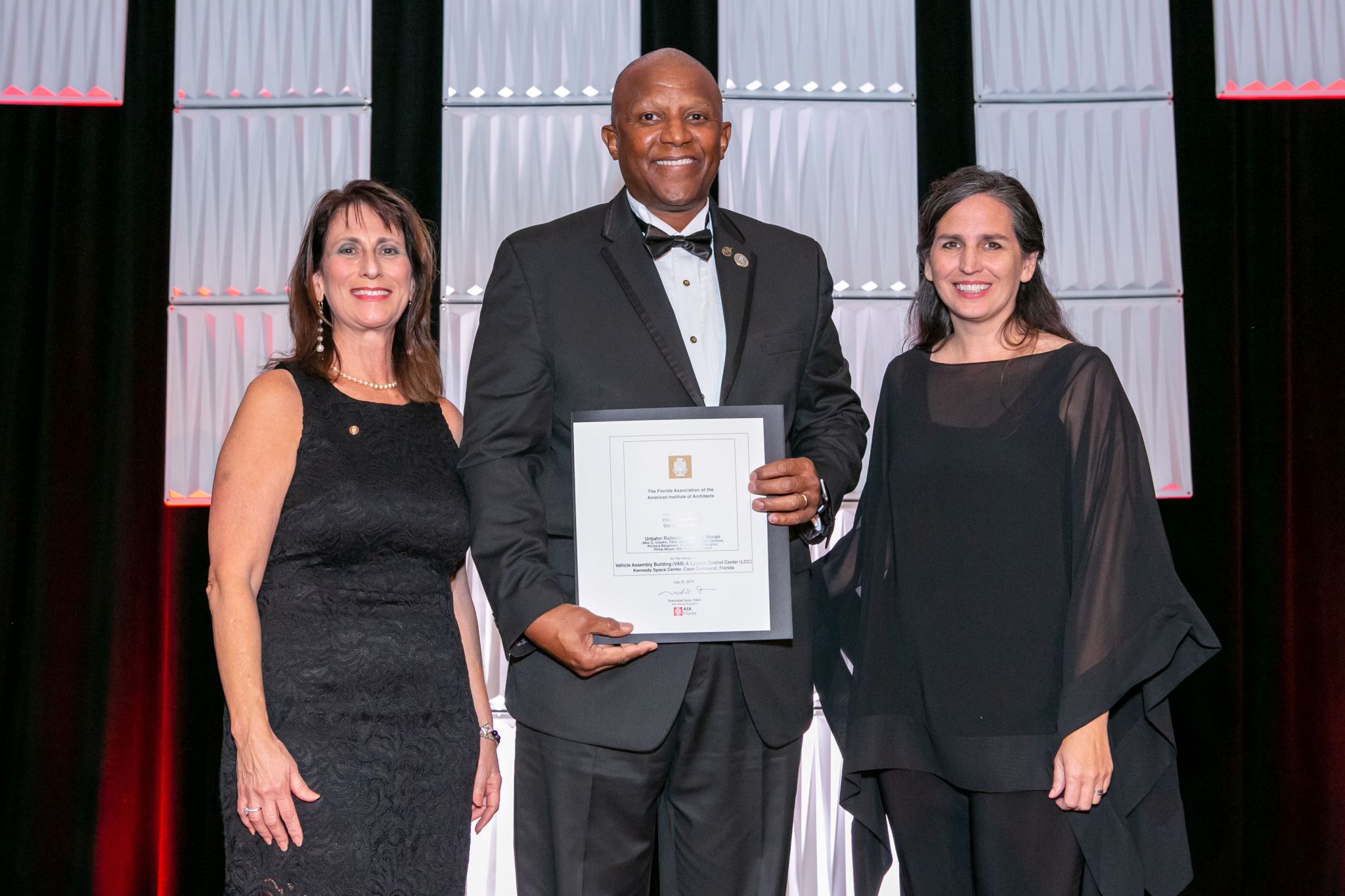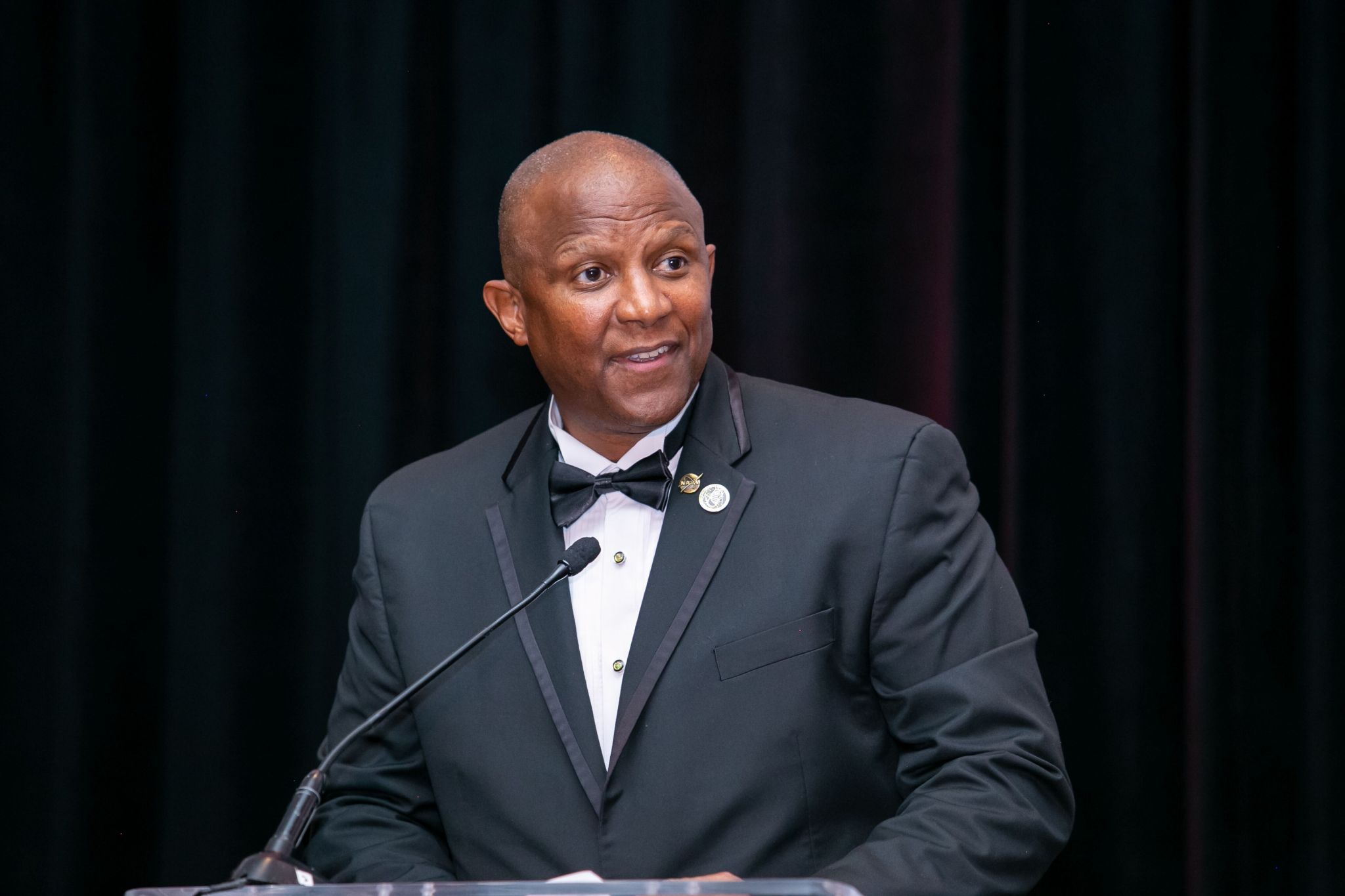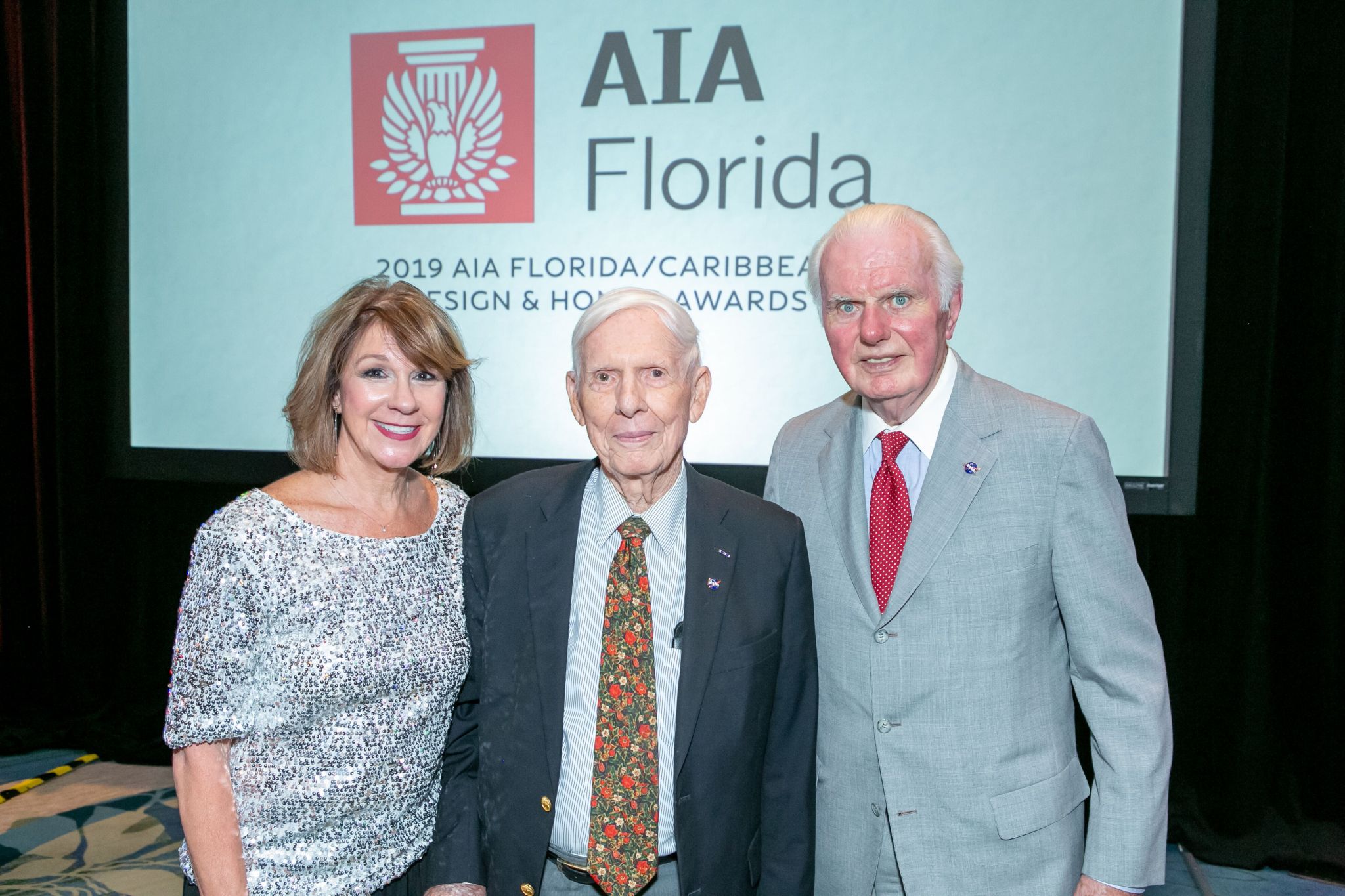
By Jim Cawley
NASA’s Kennedy Space Center
Home to the largest American flag and known for its pivotal role in the U.S. spaceflight program for more than five decades, Kennedy Space Center’s Vehicle Assembly Building, or VAB, recently received more notable recognition. The Florida Association of The American Institute of Architects (AIA Florida) honored the facility and its adjacent Launch Control Center (LCC) with a “Test of Time” design award, recognizing the exceptional contributions of the unique building’s architects and engineers.

“It’s a celebration of the VAB and the LCC — two magnificent structures,” said Kennedy Associate Director, Technical Kelvin Manning, who accepted the award, along with the project designers, during a ceremony in Orlando on July 27. “It was an honor to be a part of that award.”
Richard Bergmann, who worked with project architect Max Urbahn to design the VAB and LCC, attended the ceremony, along with former VAB project manager Philip Moyer and two of Urbahn’s sons. Bergmann was a 25-year-old architect when he sketched the first design of the VAB in 1962.
Manning spent the evening with these men, reveling in the retelling of stories that accompanied the construction of the world famous landmark. He contributed to a standing ovation when the men were called onstage, unaware at the time of the significance of the extended applause.
“I thought it was very appropriate,” Manning said. “But somebody told me afterward for a group of architects to give a standing ovation to another group of architects, that’s like walking on the Moon.”
One of the largest buildings in the world by area, the VAB truly has stood the test of time. It was constructed for the assembly of the Apollo/Saturn V Moon rocket, served as the final assembly point for space shuttles for 30 years, and has been upgraded to support NASA’s 21st century launch complex.
“As architects, we are especially proud during this 50th anniversary of the Moon landing that visionary design played an important role in the success of the Apollo program,” said Nati Soto, president of AIA Florida. “It is a great honor to present these gentlemen with our Test of Time design award for the Vehicle Assembly Building, a structure that is revered around the world.”
Covering eight acres, the VAB is 525 feet tall and 518 feet wide. At 456 feet high, the high bay doors are the largest in the world and take about 45 minutes to open. The American flag is 209 feet tall and 110 feet wide.
Constructed at the southeast corner of the VAB, the LCC has been in operation since 1965 and remains as the heart of launch operations at Kennedy. Firing Room 1, which was used for the Apollo Program, Space Shuttle Program and Ares I-X test flight as part of the Constellation Program, has been completely upgraded.
The VAB will house the SLS rocket, which will launch humans aboard the Orion spacecraft back to the Moon and on to Mars. NASA’s Artemis program will return astronauts to the lunar surface by 2024, including the first woman and the next man.
“Like the past, as well as the future, the VAB is where everything comes together,” Manning said. “It’s symbolic of what we can do.”





























